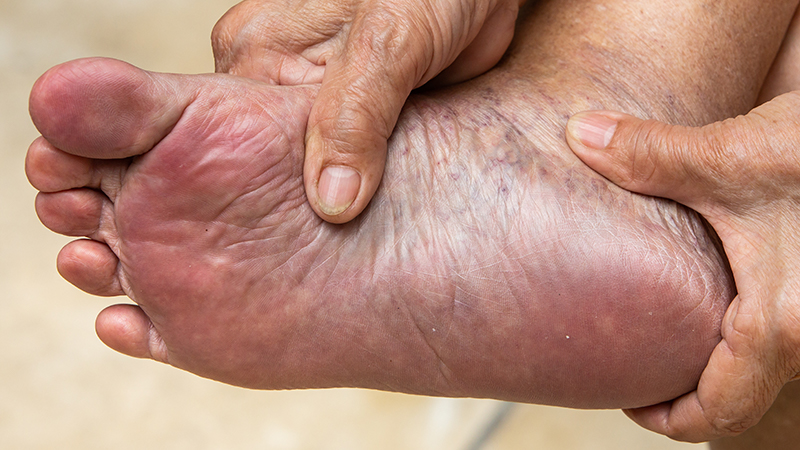New Insights into Peripheral Neuropathy
Peripheral Neuropathy vs Polyneuropathy
Peripheral Neuropathy vs Polyneuropathy

by Richard Mann, DPM, Chief Scientific Officer and Founder, Realm Labs®, sole U.S. distributor of the NeuRemedy® line of benfotiamine products for the healthy function of the nerves in the feet and legs*
Which one of the following statements is true?
- Peripheral neuropathy and polyneuropathy are the same things.
- Peripheral neuropathy is a type of polyneuropathy.
- Polyneuropathy is a type of peripheral neuropathy.
According to the National Institute of Neurological Disorders and Stroke, peripheral neuropathy refers to the many varied conditions that involve damage to the peripheral nervous system. Examples of peripheral neuropathy would include tarsal tunnel syndrome, neuromas, trigeminal neuralgia, radiculopathies, and polyneuropathy.
Polyneuropathy is the most common type of peripheral neuropathy. It is a progressive length dependent dysfunction of the peripheral nervous system that usually starts in the great toes and ascends up the feet and legs over time in a stocking/glove distribution. It is sometimes described as a dying back phenomenon affecting the peripheral nervous system. A case could be made that polyneuropathy is a neurodegenerative disease, but this term is often reserved for central nervous system diseases such as Alzheimer’s disease or Parkinson’s disease. Polyneuropathy is characterized by burning, tingling, numbness, and/or shooting pains. It is the most common and often the first complication associated with diabetes. Polyneuropathy is also commonly associated with prediabetes, chemotherapy, alcoholism, HIV infection, and advanced age.
The mechanism by which peripheral neurons dysfunction in polyneuropathy is complex, multifactorial, and the subject of ongoing research. One very intriguing theory posits that polyneuropathy is associated with decreased energy availability to the peripheral neurons. This would explain why many common causes of polyneuropathy (diabetes, alcoholism, chemotherapy, HIV infection, etc) are associated with decreased intraneuronal energy availability; either due to damaged mitochondria, the energy generating organelle of the cell, or a deficiency in thiamine (vitamin B1) or vitamin B12, nutrients essential in the generation of energy from carbohydrates.
The correct answer is:
C. Polyneuropathy is a type of peripheral neuropathy.
So, when a patient presents with bilateral numbness, tingling, burning, and/or shooting pains starting in the toes and gradually ascending up the feet and legs, consider the diagnosis of polyneuropathy.
*This statement has not been evaluated by the Food and Drug Administration.
This product is not intended to diagnose, treat, cure or prevent any disease.



Comments
There are 0 comments for this article